A boy, a soldier – and a near catastrophe
RAMALLAH, August 30, 2015 - The story is known territory, one that's been covered thousands of times. But this time it is different and disconcerting, even for someone who has been on it for so many years.
Every Friday, after the main weekly Muslim prayers, there are demonstrations in Palestinian villages in the occupied West Bank against Israeli settlements.
And it's always the same scenario. Dozens of Palestinian, foreign and Israeli activists march from the village toward areas where Israel is building more settlements.
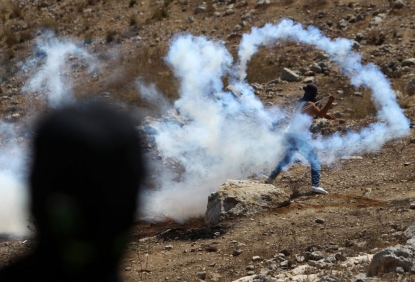 (AFP Photo / Abbas Momani)
(AFP Photo / Abbas Momani)Every time the army is waiting, and the inevitable happens -- stone-throwing by one side, tear gas grenades and rubber bullets from the other.
It is like some well-rehearsed dance in which everyone knows the outcome.
But on this particular Friday (August 28) in the West Bank village of Nabi Saleh, the rules appear to have changed. Around a dozen masked soldiers have been hiding under camouflage, and they come out of nowhere.
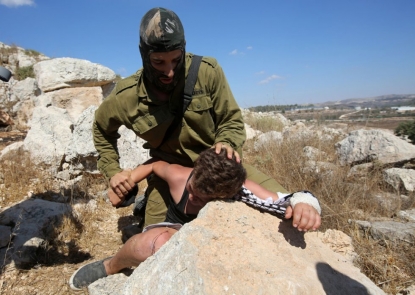 (AFP Photo / Abbas Momani)
(AFP Photo / Abbas Momani)Eleven-year-old Mohammed Tamimi, his left arm in plaster, is grabbed by one soldier.
The entire incident lasts for just three or four minutes, and in my head it flashes past even faster.
The Israeli army later speaks of "a violent riot at Nabi Saleh" and stones thrown at soldiers by Palestinians, Mohammed among them. It says he is targeted for arrest to prevent "an escalation of violence".
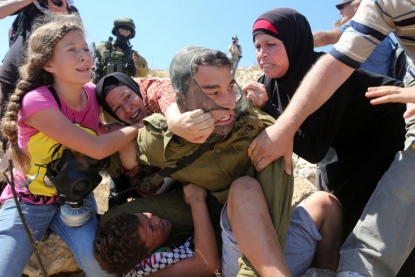 (AFP Photo / Abbas Momani)
(AFP Photo / Abbas Momani)I keep one eye on the soldier’s hand and the trigger of his automatic rifle, the other on the surreal scene as it unfolds. Before me is a child, a soldier towering above him, and the boy's family descending upon him.
The boy's mother, sister and others crowd the soldier, crying "He's a child!", "He's only a little child!". They lunge at the soldier, pulling at his arms and clinging to his back, reaching for the mask that hides his face.
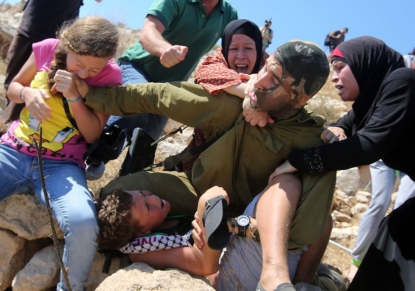 (AFP Photo / Abbas Momani)
(AFP Photo / Abbas Momani)Many things run through my mind: Why is the soldier so intent on this child? What will happen if he opens fire? Or if someone seizes his gun?
I get up close and photograph the boy's frightened face. He's trying to struggle but is locked in place on the rocky ground.
The soldier's rifle blocks the face of the Palestinian boy with his arm in a sling -- a Palestinian keffiyeh headscarf.
There's a palpable sense of danger, and obviously the soldier feels it too. He's cut off from his comrades, and cries out repeatedly in Hebrew.
"Help me!"
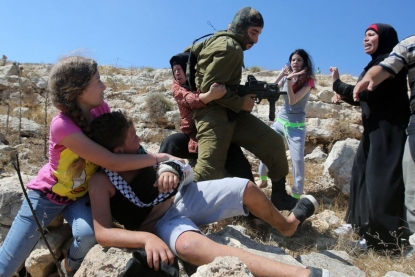
An officer finally arrives and they converse in Hebrew. I don't understand what's being said, but obviously the officer asks the soldier to let the boy go.
I really do believe that if the officer had been a little longer coming, there could have been a disaster.
Thankfully, the worst does not happen. And I get a strongly symbolic picture.
It gives a human face to a story that has been photographed so many times and for so long that it had almost become banal.
Abbas Momani is an AFP photographer based in Ramallah. This post was written with Sarah Benhaida in Jerusalem and translated by Stephen Myles in Nicosia (read the original text in French).
 (AFP Photo / Abbas Momani)
(AFP Photo / Abbas Momani)

